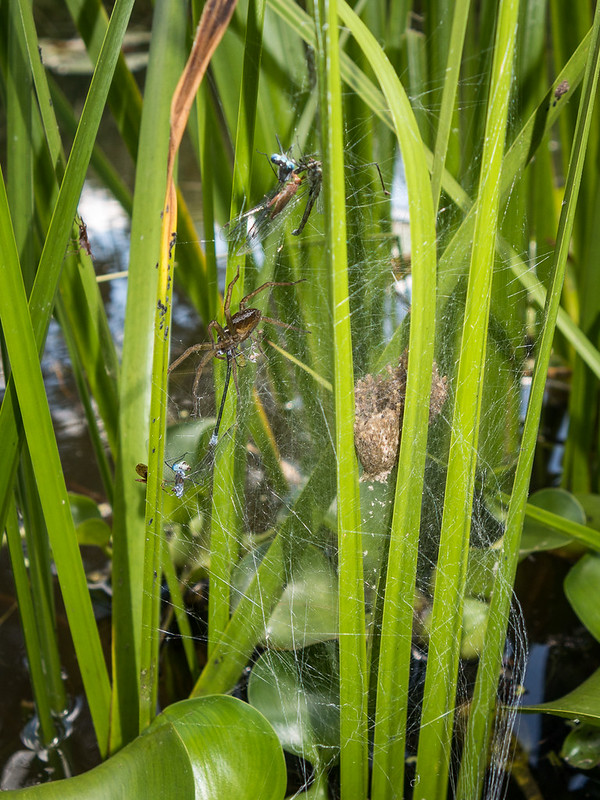Fishing spiders lay their eggs in a ball that they then carry around with them. When the eggs are ready to hatch the female builds and guards a "nursery" web where the baby spiders are protected from predators and perhaps can also find food trapped by the web. A single egg sac may produce over 1000 spiderlings.

The big spider on the left side on the outside of the web is momma. Inside the web is the remains of the egg sac. It's hard to see in the web version of this photo, but if you look closely at the top of the egg sac, you can see the baby spiders. There are several insects trapped on the outside of the web, mostly dragonflies. Momma is feeding on one of the dragonflies in this photo.
Immature fishing spiders hibernate over the winter and then mature and mate in the spring. They can produce two or three batches of eggs over the summer.
Note: This is not the same female that I took photos of with her egg sac. That one is at the other end of the pond and is still carrying around her egg sac.

The big spider on the left side on the outside of the web is momma. Inside the web is the remains of the egg sac. It's hard to see in the web version of this photo, but if you look closely at the top of the egg sac, you can see the baby spiders. There are several insects trapped on the outside of the web, mostly dragonflies. Momma is feeding on one of the dragonflies in this photo.
Immature fishing spiders hibernate over the winter and then mature and mate in the spring. They can produce two or three batches of eggs over the summer.
Note: This is not the same female that I took photos of with her egg sac. That one is at the other end of the pond and is still carrying around her egg sac.
No comments:
Post a Comment